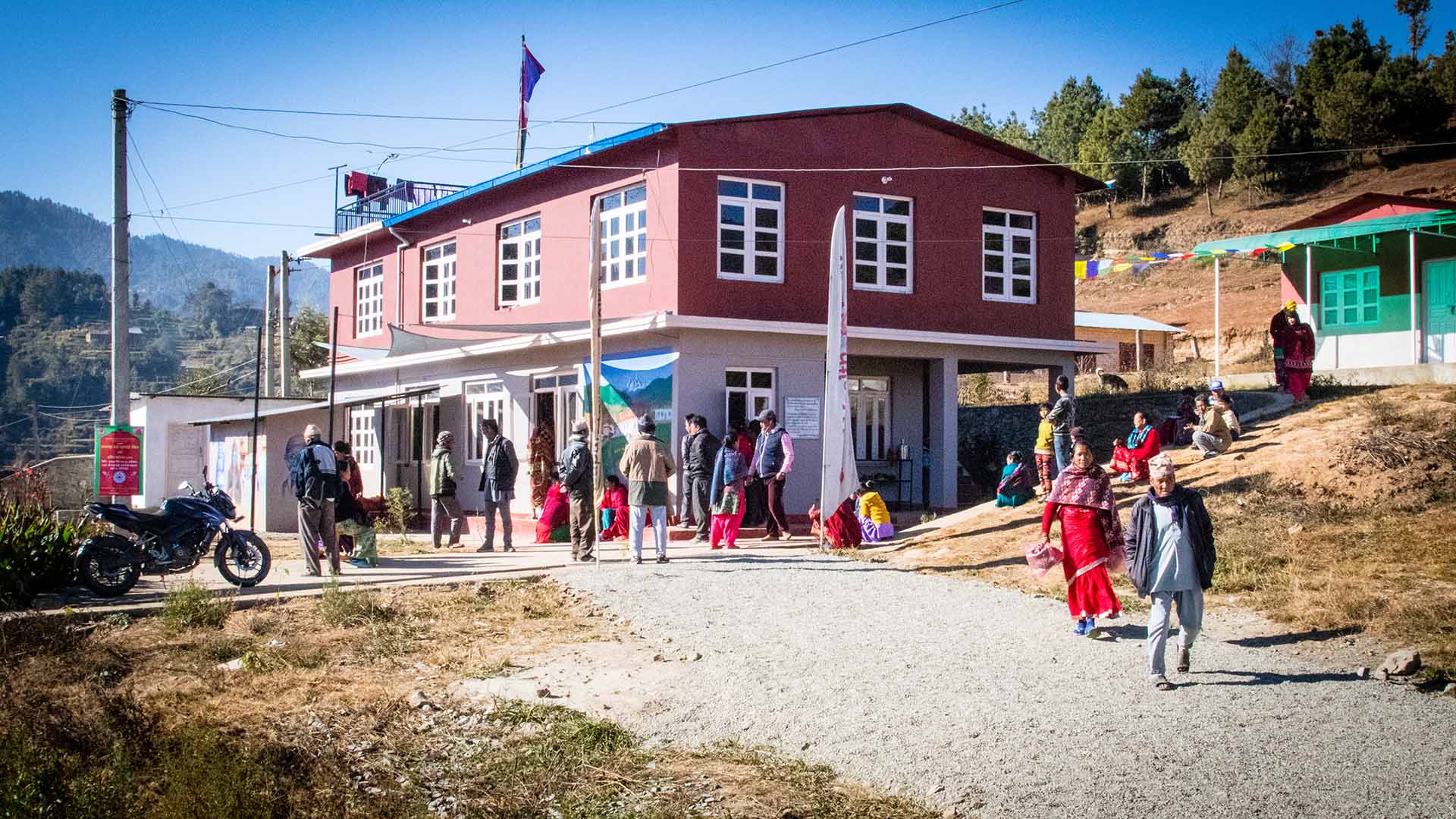News Blog
Latest News From Our Volunteers in Nepal
VOLUNTEER COMMUNITY CARE CLINICS IN NEPAL
Nepal remains one of the poorest countries in the world and has been plagued with political unrest and military conflict for the past decade. In 2015, a pair of major earthquakes devastated this small and fragile country.
Since 2008, the Acupuncture Relief Project has provided over 300,000 treatments to patients living in rural villages outside of Kathmandu Nepal. Our efforts include the treatment of patients living without access to modern medical care as well as people suffering from extreme poverty, substance abuse and social disfranchisement.
Common conditions include musculoskeletal pain, digestive pain, hypertension, diabetes, stroke rehabilitation, uterine prolapse, asthma, and recovery from tuberculosis treatment, typhoid fever, and surgery.
FEATURED CASE STUDIES
Rheumatoid Arthritis +
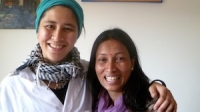
35-year-old female presents with multiple bilateral joint pain beginning 18 months previously and had received a diagnosis of…
Autism Spectrum Disorder +
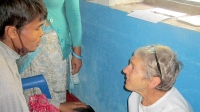
20-year-old male patient presents with decreased mental capacity, which his mother states has been present since birth. He…
Spinal Trauma Sequelae with Osteoarthritis of Right Knee +
60-year-old female presents with spinal trauma sequela consisting of constant mid- to high grade pain and restricted flexion…
Chronic Vomiting +
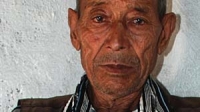
80-year-old male presents with vomiting 20 minutes after each meal for 2 years. At the time of initial…
COMPASSION CONNECT : DOCUMENTARY SERIES
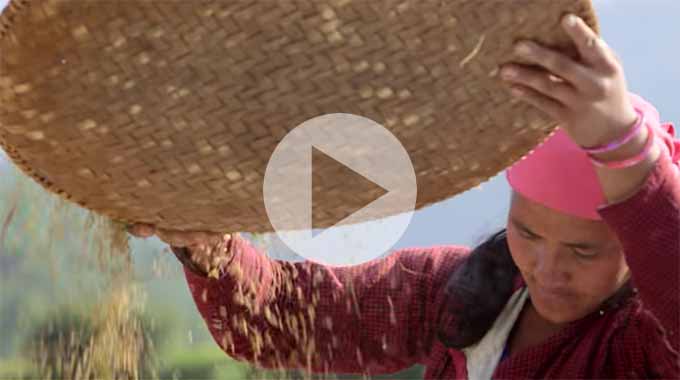
Episode 1
Rural Primary Care
In the aftermath of the 2015 Gorkha Earthquake, this episode explores the challenges of providing basic medical access for people living in rural areas.
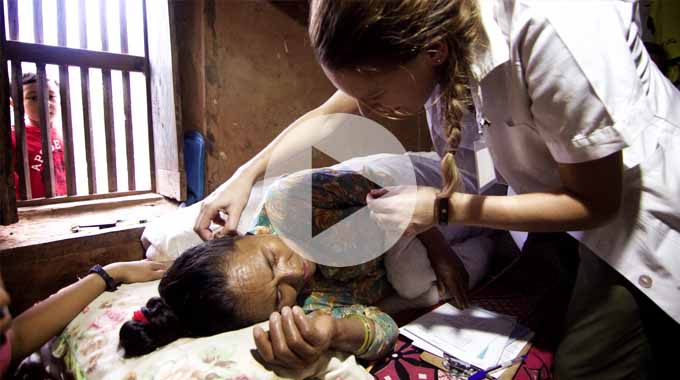
Episode 2
Integrated Medicine
Acupuncture Relief Project tackles complicated medical cases through accurate assessment and the cooperation of both governmental and non-governmental agencies.
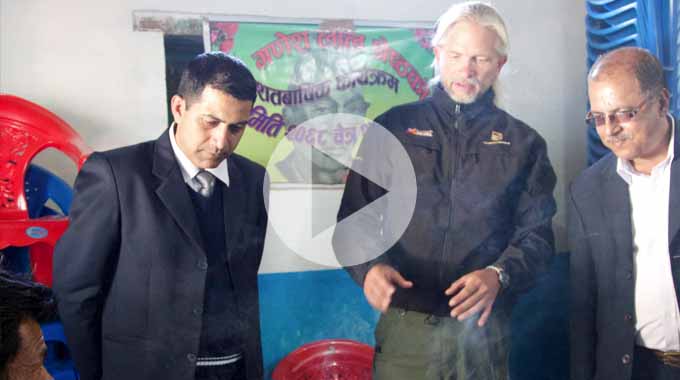
Episode 3
Working With The Government
Cooperation with the local government yields a unique opportunities to establish a new integrated medicine outpost in Bajra Barahi, Makawanpur, Nepal.
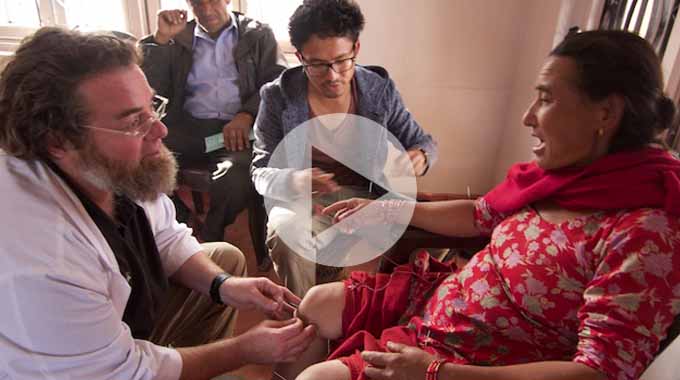
Episode 4
Case Management
Complicated medical cases require extraordinary effort. This episode follows 4-year-old Sushmita in her battle with tuberculosis.
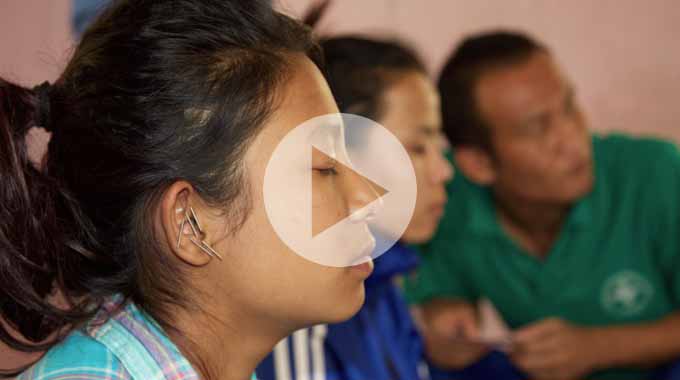
Episode 5
Sober Recovery
Drug and alcohol abuse is a constant issue in both rural and urban areas of Nepal. Local customs and few treatment facilities prove difficult obstacles.
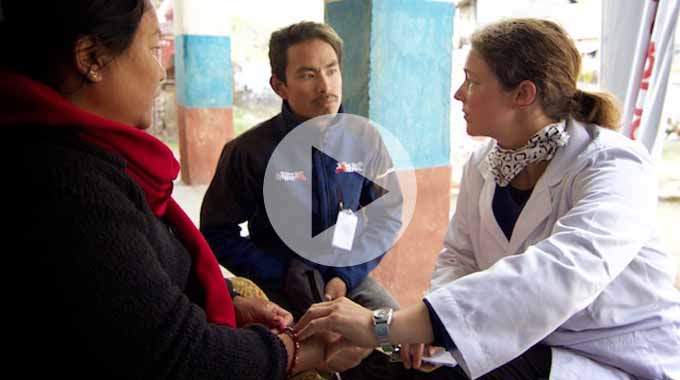
Episode 6
The Interpreters
Interpreters help make a critical connection between patients and practitioners. This episode explores the people that make our medicine possible and what it takes to do the job.
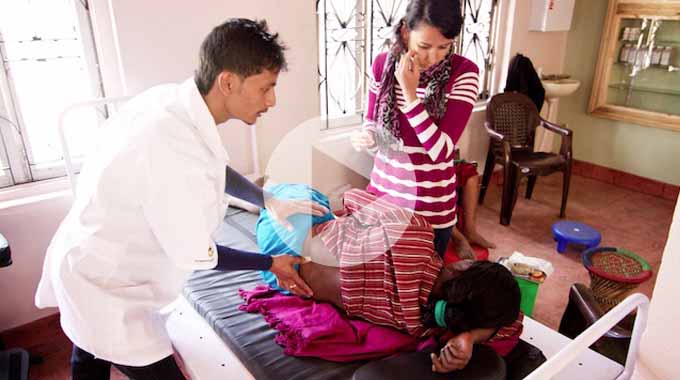
Episode 7
Future Doctors of Nepal
This episode looks at the people and the process of creating a new generation of Nepali rural health providers.
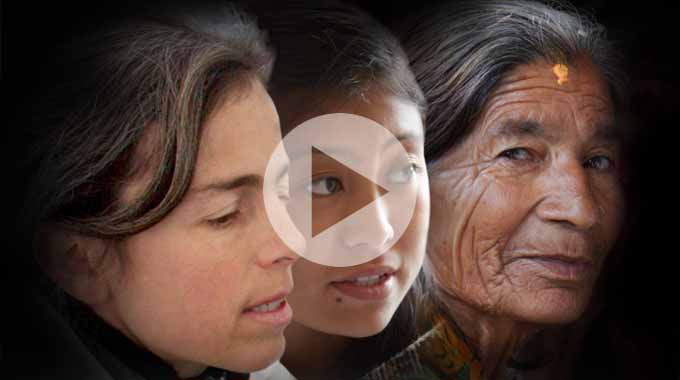
Compassion Connects
2012 Pilot Episode
In this 2011, documentary, Film-maker Tristan Stoch successfully illustrates many of the complexities of providing primary medical care in a third world environment.
From Our Blog
- Details
- By Allyndreth Stead
We are settling into a routine at the clinic now. At 5 a.m. we are awakened by the sound of symbols and drums, followed by the sounds of "elephant" horns from the monastery next door as the monks start their morning meditation. We shower, practice yoga, qi gong, or meditate to the sounds of the village slowly awakening. Those of us who are taking care of the latest flu cases, check on the the sick monks and give them treatment. Then we eat our breakfast of curried potatoes and chapatis, or pounded rice and milk tea.
At 9 a.m. the clinic opens. We are treating a wide array of conditions from knee, back and shoulder pain, to myriad of digestive issues from parasites to ulcers. We also treat a lot of hypertension, diabetes, asthma, pneumonia, and a woman with a prolapsed uterus. On top of all that we have been treating some trauma cases from the construction site next door.
At 10:30, Umilla our fabulous cook, brings us sweet tea to keep our energy up and to give the interpreters a bit of a break to wet their throats. By 12:30 we have finished treating our morning patients, and break for lunch. The food is delicious and nutritious, consisting of Dal- Bhaat (brown rice with lentil soup), bitter greens, and curried vegetables.
At 1 p.m. it is back to work to treat our afternoon patients. As we bid farewell to our interpreters at 5pm, we clean and straighten up our clinic rooms and discuss the difficult cases of the day. Slowly, young monks with upset stomachs, minor injuries, or new flu cases trickle in and are treated.
By 6:30 it is time for dinner and around 9:30 p.m. we crawl into bed to the sounds of the village "street dogs" singing or asserting their territorial rights to sleep on a particular doorstep or defend it from interlopers. As we fall into sleep, we wonder what challenges tomorrow will bring.
- Details
- By Jennie King
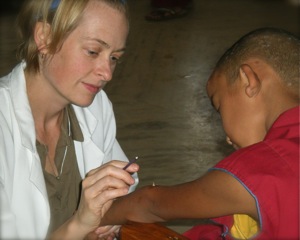 We are winding down our first week
working in the clinic and have a few highlights to report. Our team has come together nicely and
we are having a good time together.
We had a lot of ideas of how we thought things were going to go but
every day has been slightly different so we adapt to what comes up. This week has been a bit of a
wild ride because we are short on interpreters. For a few days all of us were in one room with all of our
patients (plus a few observers).
We had to share one interpreter, Satya Mohan, who was blessedly
patient. Amazingly, it worked but
now we have two interpreters as one of the nuns from last year has graced us
with her presence. The past couple
of days we have spread out over two rooms so in comparison it seems quiet. We’ve now had a chance to see some of
the patients a few times this week and are starting to get to know our clinic
community. A few of the patients
are quite rowdy and like to tease us.
We are learning a lot and already feel like we are honing our skills to
better meet our patients needs. It
takes awhile to establish a rapport with patients but as the week progresses we
are getting to know each other which makes each treatment stronger.
We are winding down our first week
working in the clinic and have a few highlights to report. Our team has come together nicely and
we are having a good time together.
We had a lot of ideas of how we thought things were going to go but
every day has been slightly different so we adapt to what comes up. This week has been a bit of a
wild ride because we are short on interpreters. For a few days all of us were in one room with all of our
patients (plus a few observers).
We had to share one interpreter, Satya Mohan, who was blessedly
patient. Amazingly, it worked but
now we have two interpreters as one of the nuns from last year has graced us
with her presence. The past couple
of days we have spread out over two rooms so in comparison it seems quiet. We’ve now had a chance to see some of
the patients a few times this week and are starting to get to know our clinic
community. A few of the patients
are quite rowdy and like to tease us.
We are learning a lot and already feel like we are honing our skills to
better meet our patients needs. It
takes awhile to establish a rapport with patients but as the week progresses we
are getting to know each other which makes each treatment stronger.
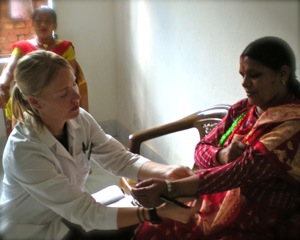 On the home front (which is right
upstairs from the clinic), we have a full house. There are the four of us, Andrew, Nicky the clinic director,
Joel from the gompa (monastery) next door, the two nuns Ani Yangchen, and
Kolpana as well as rotating sick monks.
A couple of the monks from next door have had the flu so we quarantined
them to a downstairs room so that we didn’t end up with a monastery full of
sick boys. The highlight of the
week has been the moxa and herbs for rest of the boys. We line them up to give them moxa on
four points for the immune system.
They mostly tolerate us and do a lot of whispering and giggling as we go
around. If only we knew what they
were saying. It is quite the
production.
On the home front (which is right
upstairs from the clinic), we have a full house. There are the four of us, Andrew, Nicky the clinic director,
Joel from the gompa (monastery) next door, the two nuns Ani Yangchen, and
Kolpana as well as rotating sick monks.
A couple of the monks from next door have had the flu so we quarantined
them to a downstairs room so that we didn’t end up with a monastery full of
sick boys. The highlight of the
week has been the moxa and herbs for rest of the boys. We line them up to give them moxa on
four points for the immune system.
They mostly tolerate us and do a lot of whispering and giggling as we go
around. If only we knew what they
were saying. It is quite the
production.
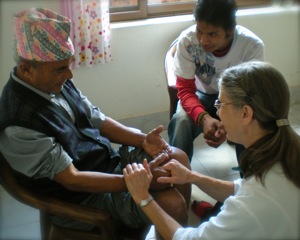 The food is fantastic as we have
our own cook. We even had cake for
breakfast the other day. Nikole’s
birthday was on Wednesday so we surprised her with a banana and fig cake that
Nicky made in the rice cooker. It
didn’t turn out like we planned so it wasn’t ready that night but with the time
difference technically Nikole had her birthday for a day and a half. You can justify anything if you try
hard enough.
The food is fantastic as we have
our own cook. We even had cake for
breakfast the other day. Nikole’s
birthday was on Wednesday so we surprised her with a banana and fig cake that
Nicky made in the rice cooker. It
didn’t turn out like we planned so it wasn’t ready that night but with the time
difference technically Nikole had her birthday for a day and a half. You can justify anything if you try
hard enough.
Overall things are shaping up and we are starting to get the hang of it. We are not as busy as last year yet (probably due to harvest) but this is merciful as we are getting up to speed ourselves. All of us are learning a few key Nepali words and can now head bobble with the best of them. Tonight, we are treating ourselves to a night in Kathmandu with the B Team women, Sarah and Jackie who have arrived early to trek.
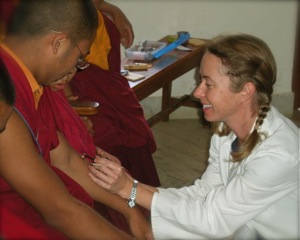
- Details
- By Andrew Schlabach
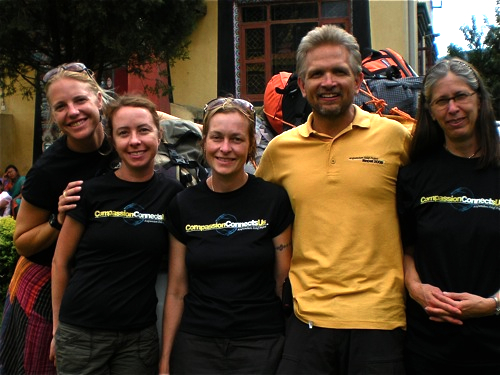
Nikole Maxey, Heidi Stoeckl, Jennie King, Andrew Schlabach and Allyndreth Stead arrived in Nepal Sept 28th having successfully transported over 500 lbs. of clinic supplies and equipment half way around the planet. We have spent the last week adjusting to the local time (about a 12 hour time difference), sightseeing in the Kathmandu Valley, setting up our clinic facility in Chapagaon and conducting some team training. It has been very exciting to be back in Chapagaon and seeing many familiar faces in the village. I have thoroughly enjoyed working with the clinic team this week and getting to know each of these gifted practitioners. I could not have hoped to bring a more delightful, insightful and hard working group to Nepal. I know they are going to be doing some great work here. The team begins clinic operations tomorrow (Oct 4th).
Our Mission
Acupuncture Relief Project, Inc. is a volunteer-based, 501(c)3 non-profit organization (Tax ID: 26-3335265). Our mission is to provide free medical support to those affected by poverty, conflict or disaster while offering an educationally meaningful experience to influence the professional development and personal growth of compassionate medical practitioners.
